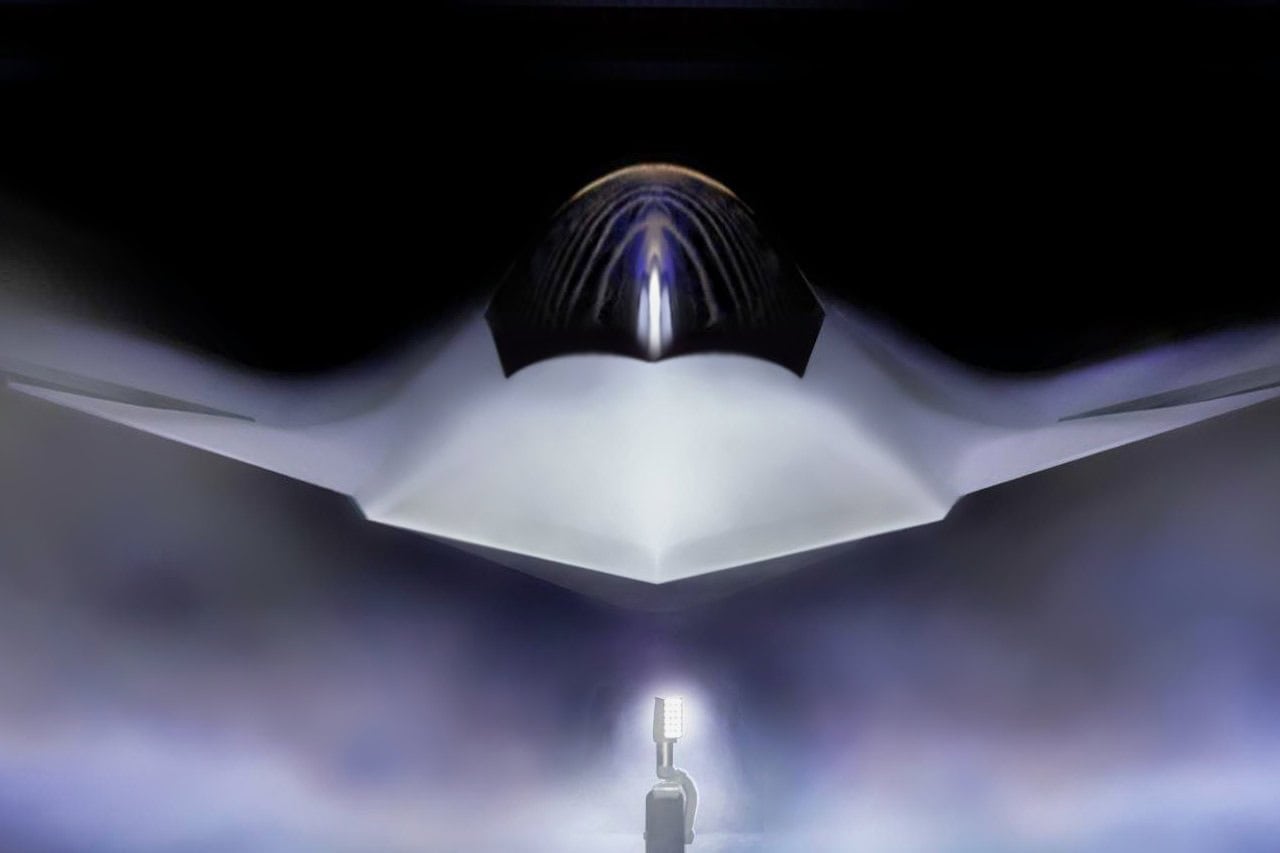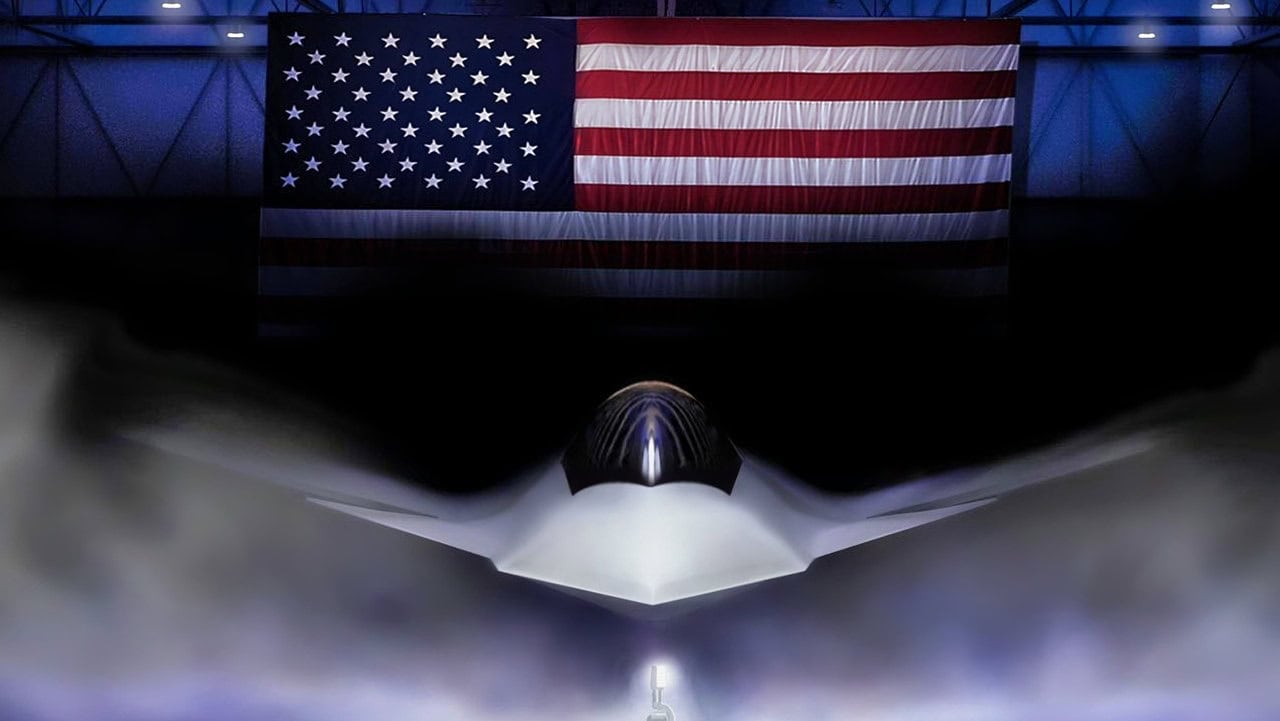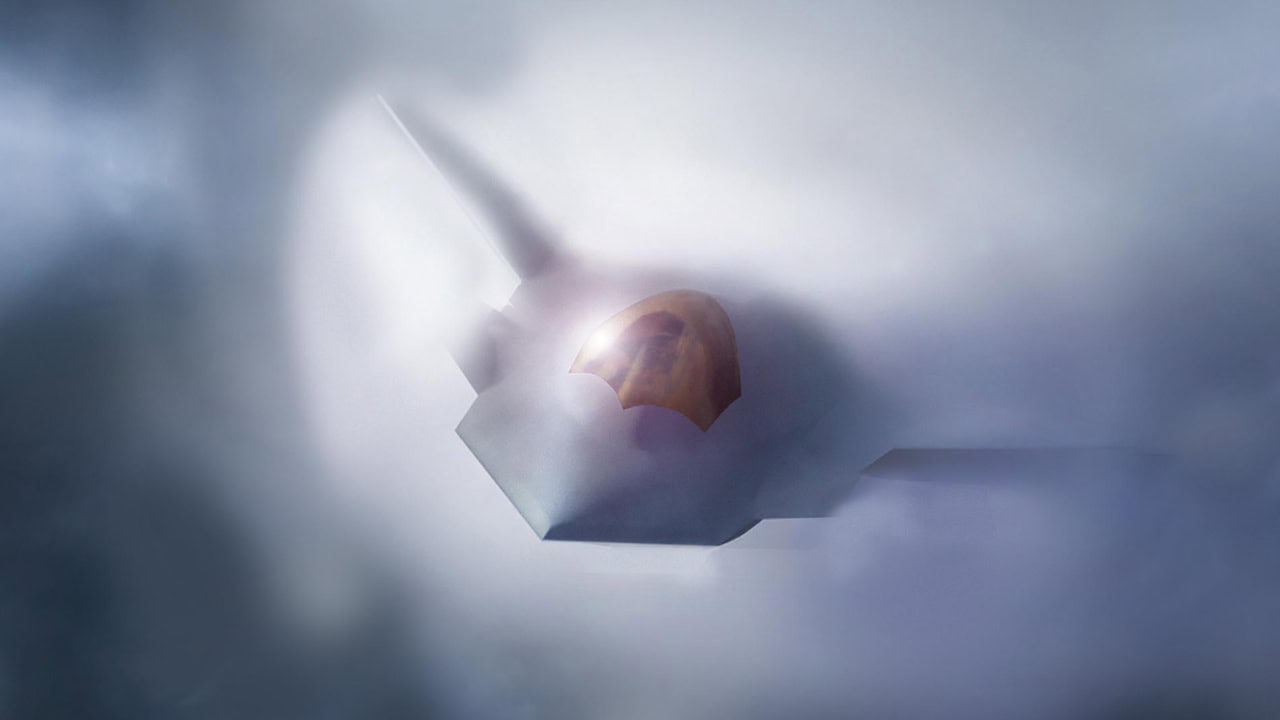In the golden age of American unipolarity, quantity took a back seat to quality. The U.S. military could afford to design exquisite platforms, produce them in limited numbers, and assume a short, sharp war in which its technological edge would dominate the battlefield. But that age is over. The return of great power rivalry, the resurgence of industrial warfare, and the likelihood that the next major war will be a grinding war of attrition demands a profound rethink. That brings us to the Air Force’s planned acquisition of just 220-250 of the Boeing F-47 NGAD fighter.
The F-47: What About the Numbers?

Shown is a graphical artist rendering of the Next Generation Air Dominance (NGAD) Platform. The rendering highlights the Air Force’s sixth generation fighter, the F-47. The NGAD Platform will bring lethal, next-generation technologies to ensure air superiority for the Joint Force in any conflict. (U.S. Air Force graphic)
Two hundred or so sixth-generation, stealthy “quarterback” fighters with drone-commanding capabilities is impressive on paper. The F-47 – as I have argued elsewhere – has the potential to be more than a stealth fighter. It is a key enabler of distributed airpower, a force multiplier, and a battlefield brain.
But if we are entering an era of high-intensity, attritional war against peer adversaries, two hundred airframes simply will not be enough.
Attritional warfare means things break. Planes are shot down. Drones are lost. Munitions run dry. It means not weeks of conflict, but months or even years. And in a war that stretches into its third or fourth month, the side with more aircraft left flying wins – not necessarily the side that started with the most advanced ones.
We know this because we’ve seen it already. Ukraine has shown that modern war is unforgiving, unrelenting, and unpredictable – but above all, attritional. Russia’s ability to absorb losses, adapt, and replenish its forces has surprised many in the West. China, which has built a defense-industrial base capable of mass production at scale, has been watching and learning. Meanwhile, the United States is still acting like it can fight the next war with boutique systems, razor-thin margins, and just-in-time logistics.
The F-47 is not the problem. It’s a marvel. What is problematic is the assumption that a small fleet of expensive aircraft will somehow be sufficient for a high-intensity war against a near-peer adversary. Two hundred or so airframes might be enough for a few weeks of combat in an ideal scenario. But against China over Taiwan or in the Pacific, or perhaps even against Russia in a broader European war, those airframes will be attrited. And there is no guarantee we could reconstitute them quickly enough.
History offers some sobering lessons. In World War II, the United States built nearly 100,000 fighters. The Soviet Union, over 130,000. These were not built because planners were irrational. They were built because war at scale demanded it. Even in Korea and Vietnam, American aircraft losses were not trivial. We accepted attrition then because we had the capacity to replace losses and sustain the fight.
The NGAD Gamble
Today, however, the American defense-industrial base is a shadow of its historical self. It takes years to build a fighter jet. Munitions production is sluggish. The pipeline for skilled labor is narrow. And bureaucratic sclerosis continues to impede procurement. We talk about surge capacity, but there is no real surge without preparation, stockpiling, and redundancy.
Two hundred F-47s with no reserve fleet, no hot production line, and no clear replenishment pathway is not a warfighting strategy. It is a gamble.
The argument for quality over quantity may still have merit in certain contexts, particularly when paired with unmanned systems and long-range fires. But that model assumes the enemy cannot match our quality or absorb losses better than we can.
Against China, that assumption is reckless. The People’s Liberation Army has spent two decades preparing for an attritional fight in the Pacific. It has more ships, more missiles, and more drones. It may not win the war in the first week. It plans to win it in the twelfth.
Attrition does not mean throwing bodies into the meat grinder, Russian-style. It means preparing for a prolonged contest of wills and resources. It means accepting that in a high-end fight, even our best platforms will be hunted, degraded, and destroyed. And it means designing a force not just to win the first battle, but to still be standing after the twentieth.
So what does that mean for the F-47? It means the Air Force needs more of them. A lot more. Or, if unit costs prevent that, it needs to ensure that the F-47 is paired with a family of affordable, attritable systems that can be built quickly, modified easily, and lost in combat without strategic consequence.
That means drone wingmen, yes, but also legacy fighters upgraded to serve in support roles, and perhaps even a renaissance of simpler, cheaper manned aircraft that can absorb risk in contested environments.
It also means adopting a doctrine where losses are anticipated and baked into force design, not treated as aberrations. And it means rebuilding America’s defense-industrial base to actually fight and win a war that lasts longer than one or two news cycles.
That, in turn, requires political will. It means resisting the temptation to pursue dazzling prototypes in lieu of sustainable production. It means budgeting for redundancy and mass, not just technological edge. And it means telling the American people the hard truth: the great power wars of the future will be brutal.
They will test the nation’s endurance. They will punish any force built on the fantasy that five exquisite aircraft can do the work of fifty.
None of this is to disparage the F-47. It will doubtless be the most capable fighter the U.S. has ever built. But in an age of attrition, capability must be matched by capacity. Otherwise, the Pentagon is building a force for the opening act, not the other four – and definitely not for the final act.
Great Power War Means the F-47 Numbers Problem Is Real
Would 220 or so F-47s be enough? No. Not even close. If the U.S. wants to deter war by being ready for it, if Washington wants to fight and win should deterrence fail, then 200 or so airframes is merely a down payment – not a full investment.

F-47 Fighter from U.S. Air Force.
In the current geopolitical era, great power war is no longer something that exists in some imagined far-distant future.
It is a near-term possibility. And preparing for it means embracing an uncomfortable but timeless truth: quantity, as Napoleon allegedly put it, has a quality all its own.
About the Author: Dr. Andrew Latham
Andrew Latham is a non-resident fellow at Defense Priorities and a professor of international relations and political theory at Macalester College in Saint Paul, MN. Andrew is now a Contributing Editor to 19FortyFive, where he writes a daily column. You can follow him on X: @aakatham.

